
DARKSTAR CAMPAIGN UPDATE: DUCHESS ANNABEL’S WAR IS OVER
Designing "German" Pocket Battleship
KMS Von der Tann (KS-1208)
Scharnhorst-class pocket battleship
Imperial Prussian Navy - Psi Serpentis and Duchess Annabel’s War
Design and Roll-Out
So as some of you who are following this project may know, my friend @aras (Alex) had something of a rough afternoon at our last big session of Darkstar. In a furious battle against my Russians and my girlfriend @gladesrunner (Jenn) Chinese and British, Alex lost two of his very best ships in near-simultaneous explosions. Of course losing battles is half the game, but normally you don’t lose a ship outright (starships are often “crippled” and can then eventually be repaired) – much less two.
Fortunately, two things mitigated the sting of this outcome. One, both his captains made their escape and survival rolls, so although the ships are gone, the commanders can continue their careers. Two, his main commander (formerly of the Prussian Leopold class heavy cruiser Franz Josef) has accrued just enough campaign points to get himself promoted into a new ship anyway.
He’s decided to take the plunge, and get his commander the very first “player-character” earned battleship in the history of Darkstar.
Of course, as the game designer and the guy running this campaign (Duchess Annabel’s War), it’s up to me to get his new class of ship ready for play. I’ve had this Prussian “pocket battleship” class ready to go for some time now, but I’ve never really playtested it before, and some of the master root math in the Excel spreadsheets that drive starships construction (and calculate scenario point cost) has changed in the years since I first designed this class, so I wanted to tweak this design, dust it off, and get it ready to go.
DESIGN CONCEPT:
The Scharnhorst class is the product of a recent effort within the Imperial Prussian Kriegsmarine to redress its overabundance on super-heavy, super-gunned, and very slow “dreadnought” style warships. Quite the opposite, the Scharnhorsts are fast, agile raiders, able to easily keep pace with virtually any known heavy cruiser and even older light cruisers. Its three triple-turreted Henschel-Krupp EGK-5100 12-gigawatt rail cannons give it an awesome punch for a ship its size, their threat further accented by the Atlas Elektronik EG-3000 targeting and sensor array. While the Scharnhorst’s 6 gigawatt rail gun secondary armament is curiously old, these guns are still more than suitable to finish off crippled freighters or tankers.
Essentially, the Scharnhorst was envisioned as a ship that could outrun anything it could not outfight. Accordingly, the captain of a Scharnhorst would be very well advised not to engage in pitched battle with a “true” battleship. At just 349,000 tons, Scharnhorsts are outweighed by at least 35% by even “light” battleships like American Colorado class or the British Repulse class battle cruiser. Note the scout ships carried to find enemy convoys, and the extended storage to support long raiding cruises and marines for boarding actions. All the same, the Scharnhorst’s protection is relatively light for a battleship. Indeed, along its aft sections, the ECM and gravitic shielding are weaker even than those of some light cruisers.
SHIPS IN CLASS:
KS-1201 — KMS Scharnhorst — 2502, New Wilhelmshaven, 61 Cygni
KS-1202 — KMS Gneisenau — 2505, Moltke Orbital Staryards, Earth
KS-1203 — KMS Graf Spee — 2506, Kiel Staryards, Vega Epsilon
KS-1204 — KMS Stauffenberg — 2508, New Wilhelmshaven, 61 Cygni
KS-1205 — KMS Graf Zeppelin — 2510, Moltke Orbital Staryards, Earth
KS-1206 — KMS Seydlitz — 2512, Kiel Staryards, Vega Epsilon
KS-1207 — KMS Preussen — 2514, New Wilhelmshaven, 61 Cygni
KS-1208 — KMS Von der Tann — 2516, Moltke Orbital Staryards, Earth
So first thing to brush up on is the ship hull and superstructure and engines. Mass, power, and crew are standard for the “battleship” warship type, and basically gets the design on the “battleship” damage and component chart (which is huge).
Two changes – the engines are now “next gen” which gives a 4% boost in available power (10400 up from 10000). Trust me, the way these spreadsheets work out this is a massive boost – as it should be since it adds 40 points to the ship’s point cost (the full price for a standard destroyer).
The other change is less fortunate – the armor ratings. In previous editions in the game, “partial armor” was possible (the game was much more granular to the point of unplayability). The Scharnhorst class had partial armor which save tens of thousands of tons of weight which allowed her to pack a huge punch and still be freakishly fast (at least for a battleship).
This design feature is no longer allowed, so I had to bump up the Scharnhost to full armor rating, which has admittedly slowed her waaaay down.
ECM and gravitic shielding are pretty standard. A rating of “4” is pretty usual for a warship, although a little weak for a battleship. Still, this ECM and shielding suite draws 3600 total power, that’s almost the total power output of a complete destroyer.
Okay, now it’s time for some fun stuff … and some very hard choices. I’m talking about the weapons load out, where that armor adjustment forced to me to make some very tough subtractions here. I was hoping the “next gen” engineering upgrade mentioned above would have allowed me to kick these 12-GW rail guns up to 13-GW, but there’s no way in hell that’s happening. In fact, I had to also remove her two triple-bank of Type IV “Sternjaeger” (Star Hunter) torpedo tubes.
Furthermore, I had to reduce the the mass driver loud-out from 48 total guns to 42 (these are small, 35mm point-defense guns to shoot down enemy fighters, bombers, missiles, torpedoes and the like.
These sacrifices, however, not only allowed me to keep the ship “legal” in the new system, but also add a nice back-up array of 6-GW rail guns for secondary armament, nice for finishing off crippled British freighters and the like. 😀
If there are any data geeks out there, the way these work is in the Type column, data validation drop-downs allow you to select weapons types from a whole menu of over 200 weapons types and calibers from a master root sheet tucked in the back of the workbook. This way you don’t have to type the name of the weapons.
This is important because the spelling and format has to be exactly right, since it reads off a VLOOKUP and IF/AND function coming off that same root sheet for mass, power, and crew requirements. These are automatically multiplied out by the number of weapons you select in the Guns column (note each of these turrets have three guns, etc.). which are also pulled off data validation drop-downs.
Long story short, these sheets do all the arithmetic for you.
Secondary systems. We like scouts, cutters, yachts, and launches so these ships can do business like real warships, there are no “transporters” in this universe and these are the kind of small craft these ships carried in “blue water” navies.
Obviously, on a ship like the Japanese Akagi class, American Lexington class, and British Ark Royal class supercarriers – or Russian Zhukov class planetary assault ships, this part of the ship design sheet gets a lot more complex.
Perhaps most important, however, is the “BB Fifth Gen Sensors (+1)” – note that is a very expensive system. It gives ALL weapons for this ship a +1 to hit, which is actually pretty serious. Given that with many engagement ranges, the BTH is maybe 8 on a d10, and you subtract enemy ECM / Gravitic Shielding from that for your final number to hit (usually a 4 or 5), this leaves you with a 3 or 4 on a d10 to hit with each weapon. If you get a +1 on that, you’re getting an effective 25%-33% bonus to hit with EVERY gun on your ship, which for the Scharnhorst class is pretty important.
These kinds of bonus especially help with long-range shooting, which ships like the Scharnhorst class really prefer, engaging with those long-reaching 12-GW rail guns at 3500+ km, pelting down enemy armor before they even have a chance to respond.
Odd and ends. Marines (boarding can be very much a thing in this game), passengers, cargo, etc.
Finally at the bottom we have the freakishly expensive 10th-magnitude Darkstar wave for the ship’s FTL. Usually battleships have a 9th-magnitude Darkstar wave for FTL, because they get geometrically more expensive in weight and especially power consumption as the class gets bigger and bigger (and battleships are of course so very big).
But this helps keep the Scharnhost as a “raider” – able to travel at much faster FTL speeds than any other battleship class on record (she pushes x300 c, most battleships only do x160 c). So if enemy scouts, corvettes, or pickets detect her in a certain star system, the potential “threat bubble” she poses to enemy fleets, commerce, shipping lanes, and orbital installations is much, much wider.
Finally we get to the “proof in the pudding,” – the THRUST of the ship. This drives how the ship moves on the table top, how she maneuvers, acellerates, decelerates, turns, rolls initiative, everything.
It’s the the total mass of the ship, divided by the remaining available power. This comes out to a ratio, which gets rounded to the nearest whole number. Clearly we’re aiming for a 3.5 here, so we wind up with a thrust of 4.
For context, this is ridiculously fast for a battleship. This is a “ninja battleship” – which is what we were aiming for in the ship design concept. Most battleships have a 2. American “Pacific Pattern” fast battleships have a 3, as do British Repulse class battlecruisers. This baby has a 4, allowing her to outmaneuver and outrun some heavy cruisers.
And with the “SLD engineering / thrust” upgrade that Alex has with his commander (purchased with xp-style “campaign points) this baby will have a thrust of FIVE. That’s absolutely nuts for a warship of this class. She’ll be outrunning heavy cruisers, and keeping up with light cruisers, and with good initiative rolls, even keeping pace with some destroyers.
But again, she’s also a lightweight. Armor is only standard, shielding is light, and those guns, while scary for a heavy cruiser, are actually quite puny for a battleship.





























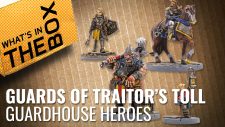











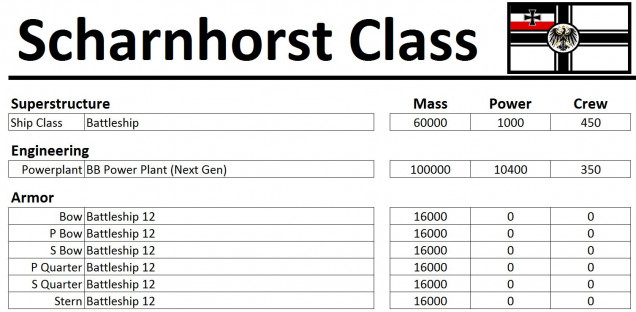

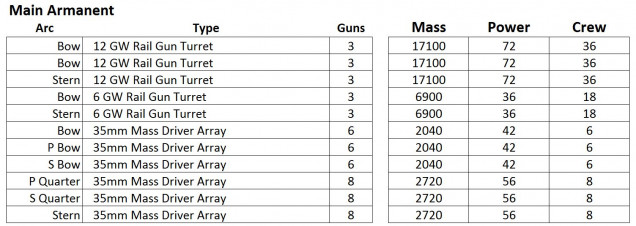
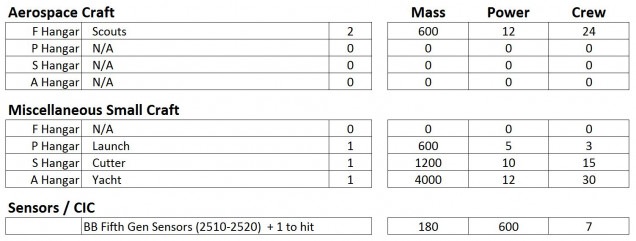
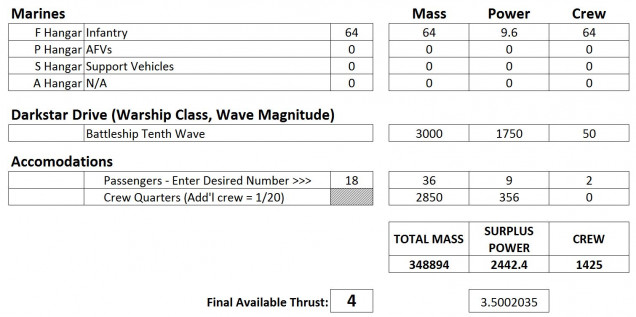



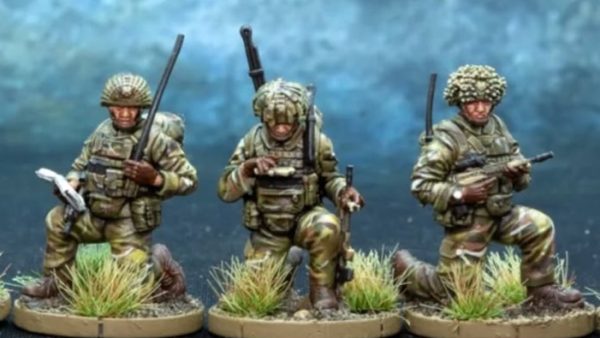





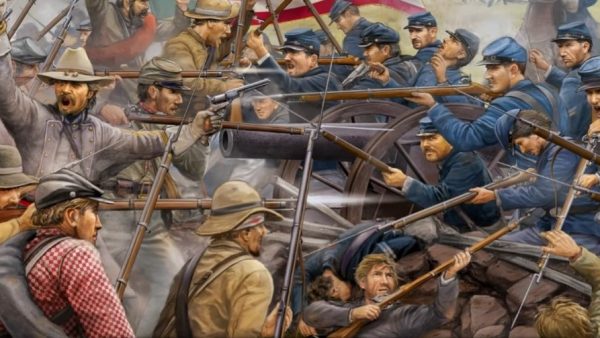























Fascinated to see how she handles, fast, powerful, but not without risk with those light defences. Love all the little details around component manufacturers and so on! Must be fun tweaking the options to try and that exact 3.5 power rating, maximising the thrust whilst not having too much surplus that could have been used to power more toys!
Absolutely – @davehawes – this is where the designers gets to make all his detailed choices and really build the ship HE wants to play. This is especially true when trying to design a ship that fits with that “faction’s” general naval doctrine, or a fleet of ship classes that you envision working together a certain way.
We have a playtest of the Scharnhorst scheduled for tomorrow afternoon. Hopefully we’ll see how it goes! 😀